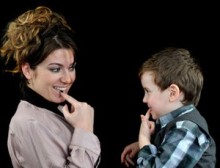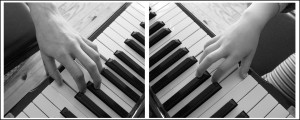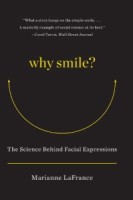Mirror neurons are imitation neurons, but does how we imitate matter? Forty years ago, long before mirror neurons were known about, psychologists Seymour Wapner and Leonard Cirillo were interested in finding out at what age children develop an understanding of right from left in terms of their spatial development. They conducted a series of experiments in which children of different ages were asked by the  researcher to “do as I do” as researcher and child were facing each other. Young children would imitate the adult researcher as though seeing him in a mirror. If the researcher raised his right hand, the child would raise his left. Mirror imitation.
researcher to “do as I do” as researcher and child were facing each other. Young children would imitate the adult researcher as though seeing him in a mirror. If the researcher raised his right hand, the child would raise his left. Mirror imitation.
But by the time the kids had reached junior high school, this mirror imitation had given way to anatomically correct imitation – raising the right hand if that’s the hand the researcher raised. They had internalized the concept of right vs. left from the perspective of someone other than themselves (in this case, the researcher); right and left occupied different space depending on perspective. Wapner and Cirillo referred to this as transposition; other researchers call it mimicking. (The photo is a good illustration of mirror imitation. It’s from a blog post about mirror neurons and autism. Click on the photo if you are interested in this area of mirror neuron research.)
Thirty-five years later, Marco Iacoboni and colleagues at UCLA expanded on Wapner and Cirillo’s research in a study about mirror neurons. They reasoned that if mirror neurons are critical for imitation, then even though adults may imitate with the anatomically correct hand, the mirror neurons for the “mirror hand” should be more active. And sure enough – that’s what they found. They designed an experiment in which adult subjects were to imitate finger movements done by a researcher – but only with the right hand, regardless of which hand the researcher was using. So sometimes the subject’s right hand would be mirroring the right hand of the researcher – sometimes the subject’s right hand would be imitating the left hand of the researcher. (And if you’re interested, this is a link to the article.)
And as they had suspected, Iacoboni and colleagues found that mirror neurons were activated more strongly during mirror imitation than during anatomically correct imitation. In fact, the mirror neurons were activated four times more strongly during mirror imitation. The movements were the same in both cases, but mirror neurons were more active when mirroring was occurring as opposed to mimicking. We know that mirror neurons are an important component of motor skill learning, so if mirroring activates mirror neurons four times more strongly than mimicking, it would seem that actual mirroring should be an important part of the teaching and learning process of a musical instrument.
But some of you are no doubt already thinking “wait a minute.” That won’t work with my instrument. And yes, mirroring presents a challenge when teaching a musical instrument because all instruments, other than some percussion, have pitch, and mirroring with pitch will create a kind of cognitive dissonance.

For example, if two keyboards are placed back to back, as I play notes going up the keyboard to my right, pitches will be ascending; as you go to your left to directly mirror me, the pitches on your keyboard will descend. The brain won’t quite know what to do with that information. On the one hand, our two hands will be in mirror motion, but the resulting pitches will be going in opposite directions. But if you take pitch out of the equation, putting two digital keyboards without sound back to back, there is no better way for young students to learn hand position and beginning aspects of technique. Their mirror neurons will be imitating your motions, so it is as though they are making the same motions themselves. The movements they imitate become part of their motor template for playing the piano – laying the groundwork for future learning.
There are a lot of keyboard apps for iPad, so if you and your student both have iPads with a keyboard app, it’s easy to turn off the sound and mirror. And there is even an app called “Fun Piano” that has two keyboards, and you can flip one so you and the student can mirror on one iPad.
Other instruments, such as the violin, present different kinds of mirroring challenges, but challenges that are worth thinking about. Especially with young children, mirroring has been found to be a remarkable aid in learning. So it’s worth giving some thought to the instrument you play – how could you use mirroring when teaching a beginning student? And if you have a great idea, please share.
And if you can’t mirror? Remember that mirror neurons are still firing whenever you observe an action, whether it is direct mirroring or not. And there are, according to Iacoboni, mirror neurons that fire for both hands. So it all comes down to observation. Whether you are learning to play a musical instrument, learning to play a sport, or learning some other motor activity, watching others who are experts is a significant aid to learning.
And let’s add another facet to the learning process: we all know that whatever the age of the student, we learn best when we have a teacher we like. We have experienced it ourselves – perhaps when learning an instrument, perhaps a sport, or maybe an academic subject. If we seem to “connect” with the teacher, we learn faster. So how does that “connection” relate to mirror neurons?
 Marianne LaFrance is a psychologist at Yale who studies nonverbal communication. Her most recent book is called Why Smile: The Science Behind Facial Expressions. In this book she explores the science behind the smile and shows that facial expressions have social consequences, both positive and negative. But in the 1980s, she was studying other unconscious forms of imitation. In one study, she looked at arm and torso positions of students and teachers in an academic classroom during regular class periods. She categorized imitative postures as either mirroring or mimicking. She then correlated overall rapport in the classroom with the unconscious imitation of the teacher by the students. She found that the higher the rapport, the more mirroring was taking place as opposed to anatomically correct imitation, or mimicking.
Marianne LaFrance is a psychologist at Yale who studies nonverbal communication. Her most recent book is called Why Smile: The Science Behind Facial Expressions. In this book she explores the science behind the smile and shows that facial expressions have social consequences, both positive and negative. But in the 1980s, she was studying other unconscious forms of imitation. In one study, she looked at arm and torso positions of students and teachers in an academic classroom during regular class periods. She categorized imitative postures as either mirroring or mimicking. She then correlated overall rapport in the classroom with the unconscious imitation of the teacher by the students. She found that the higher the rapport, the more mirroring was taking place as opposed to anatomically correct imitation, or mimicking.
So LaFrance’s research, which was well before the discovery of mirror neurons, shows us that the more rapport, the more mirroring. And mirror neuron research shows us that the more mirroring, the more learning – because mirror neurons facilitate motor skill learning. So study with a teacher or a coach you like. You’ll learn faster.
Next time: on to the fascinating auditory mirror neuron system.
One response to “Mirror neurons and music, part IV: mirroring vs. mimicking”
Wunderbar!